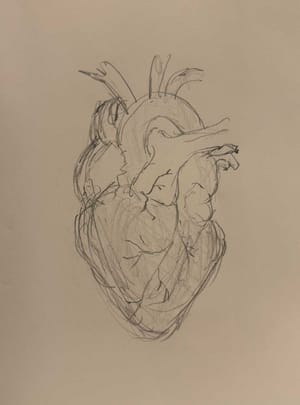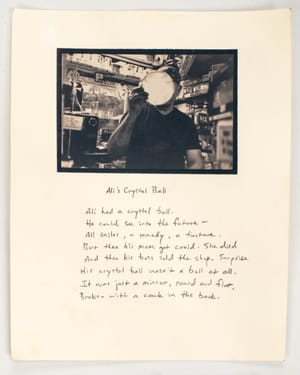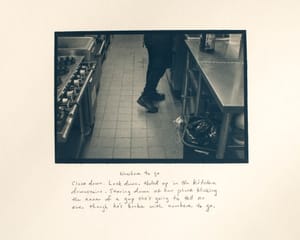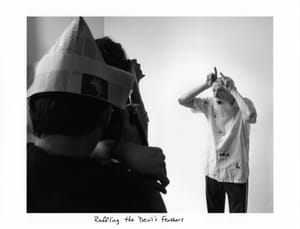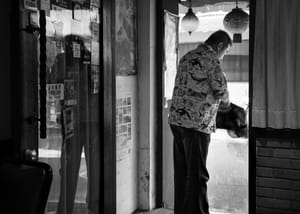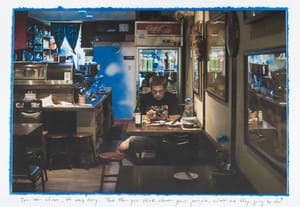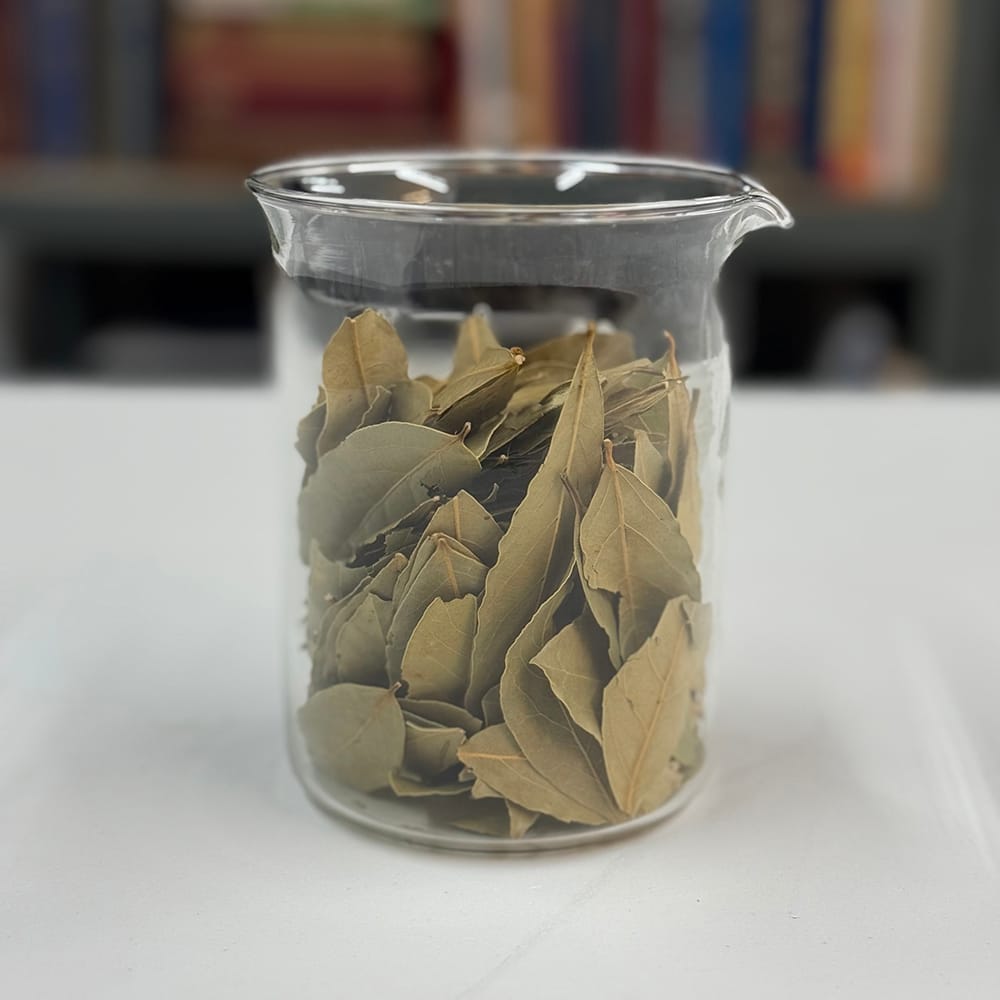
Toning Cyanotypes with Bay Leaves
To tone cyanotypes, you need something with tannins. The tannins will bond with the iron in a cyanotype to create a new color, and different tannins create different colors.
I choose plant material related to my subject matter--I don't have specific colors in mind. In this case, I’m using bay leaves the restaurant I photographed uses.
- Step One: Boil the bay leaves to get the tannins out of the leaves.
- I bring it to a boil and then let it simmer for an hour.
- The photo above is 10 grams of bay leaves. I used this in a three-liter toning bath.
- Step Two: Make the toning bath
- The target temperature for the toning bath is 120 degrees Fahrenheit. Mixing half tap water with half simmering water will get you close. Adjust as needed.
- If you use hard water, you'll get different and usually stronger tones compared to the same toning bath with soft water. You can increase the ph with calcium carbonate, about one gram per two liters. You can also use a little baking soda if needed. Use a ph testing kit. My tap water is about 5.5. I push it up towards 7. If the ph is too high, I notice a degradation in the paper and the fidelity of the image.
- The boiled bay leaves sink, so I left them in the bath. With other plant material that can float, I strain the material out.

- Step Three: Soak the prints
- Submerge the prints face down. Agitate occasionally, but I just let them sit. Make sure you don't have bubbles under the paper. Check them periodically.
- Some plant material tones quickly and some tones more slowly. Experiment and see what works for you.
- Step Four: Rinse the prints in a circulating water bath for 10-15 minutes. Then hang them to dry.


📖
Refer to Cyanotype Toning, Using Botanicals to Tone Blueprints Naturally, by Annette Golaz


